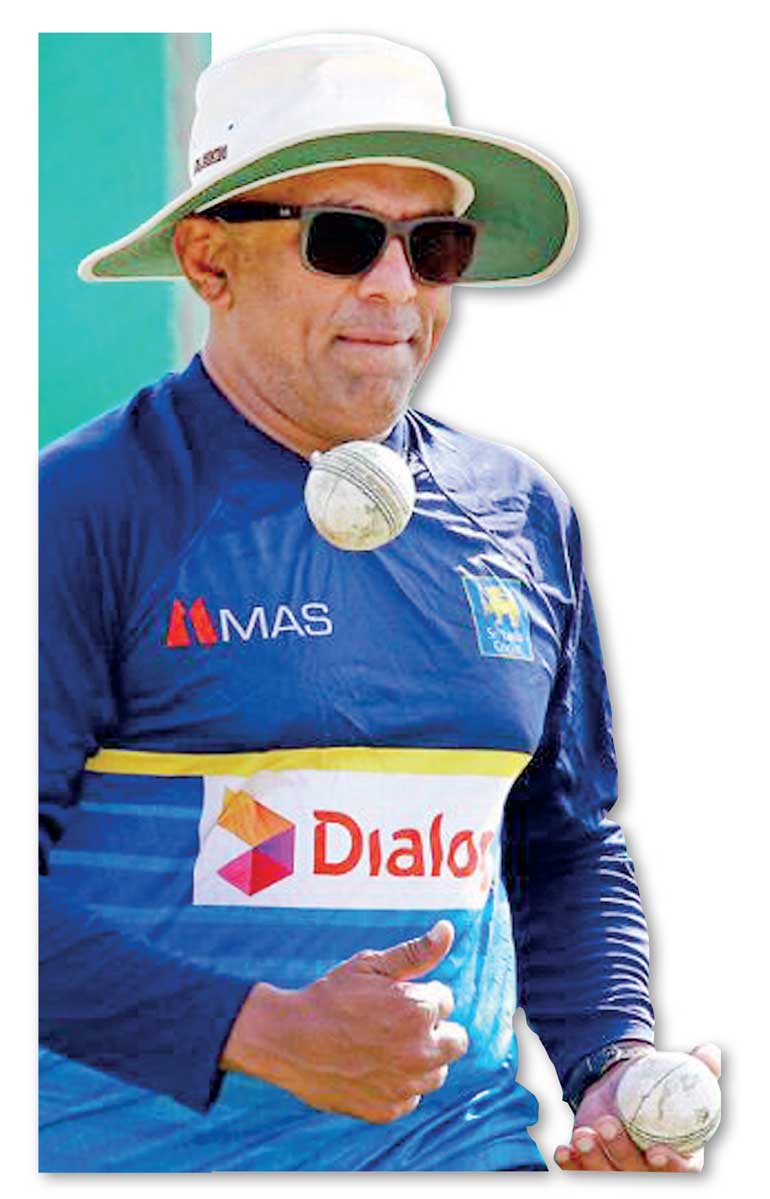Monday Nov 03, 2025
Monday Nov 03, 2025
Wednesday, 21 February 2018 00:00 - - {{hitsCtrl.values.hits}}
 ESPNCricinfo: One tour, three formats, three series wins. For Chandika Hathurusingha, it has been the ideal start to his tenure as head coach of Sri Lanka.
ESPNCricinfo: One tour, three formats, three series wins. For Chandika Hathurusingha, it has been the ideal start to his tenure as head coach of Sri Lanka.
Speaking on his side’s return home from Bangladesh, a content Hathurusingha cited good communication, tactical flexibility, and a relaxed environment as key elements in Sri Lanka sweeping every trophy on offer. Now, his concentration has shifted to cultivating a strong squad that can compete in various conditions.
“We want a big pool of players for us to compete against different countries and different opposition, depending on their limitations and strengths,” Hathurusingha said. “All the players get an equal opportunity and they will definitely know where they stand when it comes to selection.
“With me, I don’t think you will see the same team too often. Of course the players that perform have the assurance of their places in the team, but will always try and see the best combination that can win games. It’s not that we’re trying to play with just eleven players for the next two years.”
Jeevan Mendis provided prime example of this policy in action. Drafted in after three years out of the national setup, he had an immediate impact, picking up two wickets in his first over.
“We know his talent, and coupled with his recent domestic record we knew we wanted a player with Jeevan’s qualities,” Hathurusingha said. “It depends on the opposition, depends on the conditions, and what we want to achieve. It’s all about flexibility with the team and we have communicated to the players as well, and they all know what their roles are. That’s how it’s going to be going forward.”
Thisara Perera too has benefited from Hathurusingha’s clear tactical instructions. After an inconsistent period, the allrounder found fluency on the tour to Bangladesh, scoring 134 runs in five ODIs at an average of 44.66 and a strike-rate of 154. He also picked up five wickets. His destructive side was on display in the T20Is, where he struck quickfire cameos of 31 and 39 not out.
“Thisara had come back to the national side after a while, and so we spoke to him a lot about his role. We also changed his training methods a bit. We all knew how talented he was, but he just needed to harness that better. We are now seeing what he’s capable of. I think he still has room to improve, and room to contribute, but it all depends on the roles and opportunities that he gets.”
Hathurusingha was also pleased with Sri Lanka’s fight on the tour after they were beaten by both Zimbabwe and Bangladesh at the start of the ODI tri-series in January.
“We knew we had the capability to come back. The opposition played really good cricket in the first two games and we took time to get used to the conditions. We also got a few things wrong tactically, but we came and corrected it in the next few games,” Hathurusingha said.
“The biggest help was the environment, which was good for the players. The coaching staff also helped a lot. We also communicated a lot with the players on their concerns and views, we tried to get them to focus on their cricket and perform without worrying too much about the outcome.”
Sri Lanka’s next assignment is the Nidahas Trophy, where they will face a wounded Bangladesh and an in-form India in a T20I tri-series. Hathurusingha is looking forward to the challenge. “We can definitely go and compete with bigger teams, but in cricket you can’t guarantee results. What we can assure and try to aspire to, is to try and get better every time we train, every time we play, and try to do our best. As long as we play to our potential I’m happy, because the more we play to our potential, more often than not we will win.”